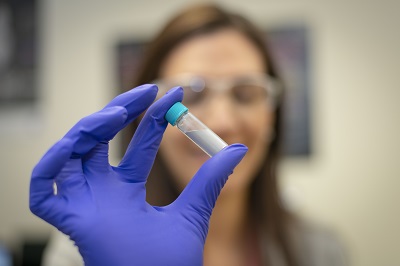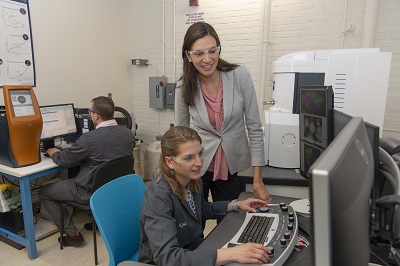TheWorcester Polytechnic Institute(WPI),Massachusetts,has received a three-year, $25 million award from the U.S. ArmyCombat Capabilities Development Command Army Research Laboratory(CCDC-ARL) to develop metal cold spray additive manufacturing (CSAM) processes for the battlefield.
在这个项目中,WPI的任务是描述and testing alloys which would ultimately enable the production and repair of military-grade components. This eliminates the extensive wait and high cost for manufacturing new parts for military units.
“Cold spray is a foundational technology with a wide variety of applications, in the military and beyond,” said Danielle Cote, director of WPI’s Center for Materials Processing Data and the principal investigator for the ARL project.
ARL’s interest in Cold Spray Additive Manufacturing
CSAMdeposits metal powders to near-supersonic speeds using pressurized gas. Without first melting the powders, the spray adheres to the metal upon contact due to the force of impact. The process can be reduced to a portable handheld applicator, which makes it attractive for use in the field. The technology has been previously used by engineers to repairengine gearboxesandmakeelectric motors.
“If you’re on a mission and need to move quickly to a safer place, and a critical part on your vehicle breaks, you’re stuck unless you can repair it quickly. That’s where cold spray comes in,” added Cote.
“The Army is interested in cold spray 3D printing as a repair technique [as] it’s cheaper to repair a part than to replace it, and you get the equipment back in service faster. The Army’s primary interest is unit readiness.”
Last month, ARL also awardedRowan University, New Jersey$14.5 million to develop polymer CSAM.As part of the ARL project, the WPI research team will also work with several subcontractors, including theUniversity of California Irvine, the马萨诸塞大学洛厄尔andPenn State University.
Customizing CSAM metal powders
For most manufacturing methods such as casting and forging, metal alloys are altered by first being melted then heat treated. On the other hand, alloys are not melted before being cold sprayed, nor are they heat-treated after application. CSAM does not require alloys to be capable of melting for application. As a result, the research team can access a wider range of potential materials compared to other manufacturing methods.
To develop and study chemical and structural properties of the powders at nanoscale, WPI has acquired a variety of equipment as part of the ARL award. These include tools such as a SEM/EDS unit, a synchronous laser diffraction and dynamic image particle analyzer to determine powder morphologies, and nano indenters to measure nano-scaled mechanical properties.
The team has discovered that with the careful application of heat, the properties of cold spray powders can be fine-tuned and enhanced. Computational models are developed to determine the alloys chosen for study and thermal processing regimes adopted. Grounded in extensive laboratory experimentation and drawing on WPI’s voluminous databases of metal properties, the models make it possible and more effective to custom design powders for specific cold spray applications.

Improving military readiness by CSAM
WPI’s powder modification technique can manufacture engineering-grade alloys with high strength, toughness, and ductility. For example, the replacement of helicopter gearboxes often takes months or even years. Especially gearboxes require frequent maintenance, the cost for repairs and replacements is significant. On the other hand, CSAM can effectively repair or even manufacture parts of gearboxes, bringing helicopters back in the air quickly.
Although ARL’s primary focus is on alloys for repairs, the award also allows WPI to explore CSAM applications beyond the battlefield such as applying antibacterial copper coatings on equipment. Furthermore, researchers in WPI’s robotics engineering program will explore the use of multi-axis robots to automate CSAM.
“With the work we will be doing with powder development, in robotics, and in a number of other areas, I think we are going to go a long way with cold spray. There really are endless possibilities,” Cote concluded.

For more on additive manufacturing in academia, subscribe to our3D Printing Industry Newsletter, follow us onTwitter, and like us onFacebook. Find talent for a project, or advance your career in 3D printing – join3D Printing Jobsto apply and advertise.
Featured image shows WPI professor Danielle Cote (center) leading a WPI research team that will study cold spray 3D printing techniques. Photo via WPI.



